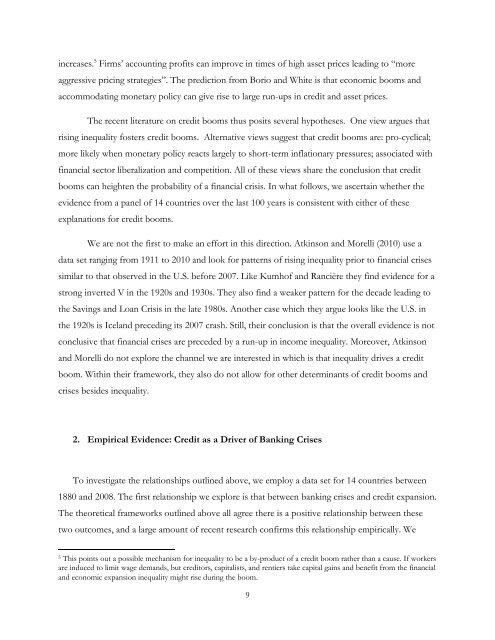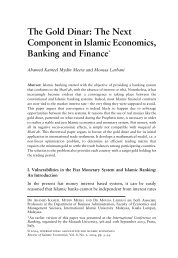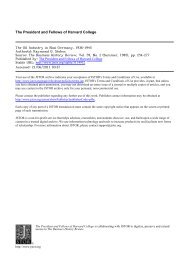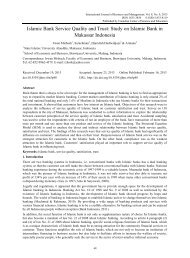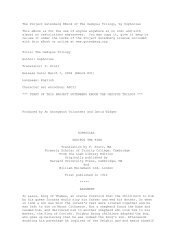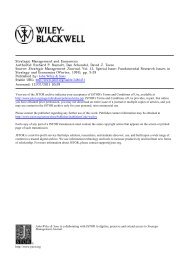Michael D. Bordo Christopher M. Meissner Working Paper 178
Michael D. Bordo Christopher M. Meissner Working Paper 178
Michael D. Bordo Christopher M. Meissner Working Paper 178
Create successful ePaper yourself
Turn your PDF publications into a flip-book with our unique Google optimized e-Paper software.
increases. 5 Firms’ accounting profits can improve in times of high asset prices leading to “more<br />
aggressive pricing strategies”. The prediction from Borio and White is that economic booms and<br />
accommodating monetary policy can give rise to large run-ups in credit and asset prices.<br />
The recent literature on credit booms thus posits several hypotheses. One view argues that<br />
rising inequality fosters credit booms. Alternative views suggest that credit booms are: pro-cyclical;<br />
more likely when monetary policy reacts largely to short-term inflationary pressures; associated with<br />
financial sector liberalization and competition. All of these views share the conclusion that credit<br />
booms can heighten the probability of a financial crisis. In what follows, we ascertain whether the<br />
evidence from a panel of 14 countries over the last 100 years is consistent with either of these<br />
explanations for credit booms.<br />
We are not the first to make an effort in this direction. Atkinson and Morelli (2010) use a<br />
data set ranging from 1911 to 2010 and look for patterns of rising inequality prior to financial crises<br />
similar to that observed in the U.S. before 2007. Like Kumhof and Rancière they find evidence for a<br />
strong inverted V in the 1920s and 1930s. They also find a weaker pattern for the decade leading to<br />
the Savings and Loan Crisis in the late 1980s. Another case which they argue looks like the U.S. in<br />
the 1920s is Iceland preceding its 2007 crash. Still, their conclusion is that the overall evidence is not<br />
conclusive that financial crises are preceded by a run-up in income inequality. Moreover, Atkinson<br />
and Morelli do not explore the channel we are interested in which is that inequality drives a credit<br />
boom. Within their framework, they also do not allow for other determinants of credit booms and<br />
crises besides inequality.<br />
2. Empirical Evidence: Credit as a Driver of Banking Crises<br />
To investigate the relationships outlined above, we employ a data set for 14 countries between<br />
1880 and 2008. The first relationship we explore is that between banking crises and credit expansion.<br />
The theoretical frameworks outlined above all agree there is a positive relationship between these<br />
two outcomes, and a large amount of recent research confirms this relationship empirically. We<br />
5 This points out a possible mechanism for inequality to be a by-product of a credit boom rather than a cause. If workers<br />
are induced to limit wage demands, but creditors, capitalists, and rentiers take capital gains and benefit from the financial<br />
and economic expansion inequality might rise during the boom.<br />
9


